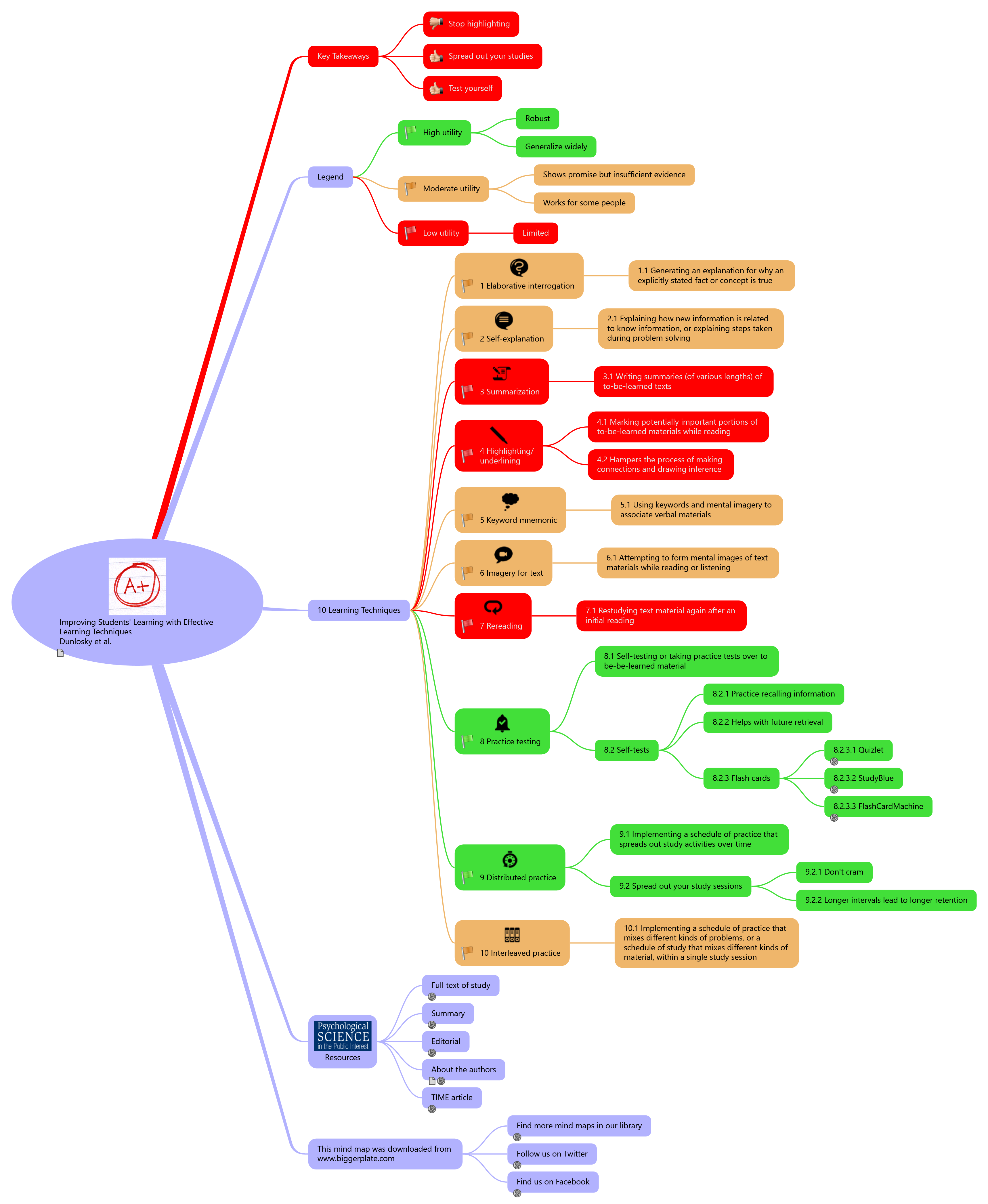
“Improving Students’ Learning with Effective Learning Techniques” is a research paper by Dunlosky et al. that highlights various learning techniques that can enhance students’ learning and retention. The key takeaways from the research are to stop relying solely on highlighting, spread out your study sessions, and engage in regular self-testing. Let’s dive into the 10 learning techniques mentioned in the study:
- Elaborative Interrogation: This technique involves asking yourself “why” questions while studying. By actively seeking explanations for the material, you deepen your understanding and connect new information with existing knowledge.
- Self-Explanation: After reading or learning something new, try to explain the concept or idea in your own words. This process helps clarify your understanding and identify any gaps in your knowledge.
- Summarization: Summarizing the main points of the material in a concise manner can enhance retention. Condensing information requires you to focus on the most important aspects of the content.
- Highlighting/Underlining: While this technique is commonly used, the research suggests that it should be used sparingly. Instead of mindlessly highlighting, only mark the most crucial information to maintain its effectiveness.
- Keyword Mnemonic: Creating associations between new information and familiar keywords or mental cues can aid in remembering complex concepts.
- Imagery for Text: Visualizing the content you’re studying can make it more memorable. Try to create mental images or diagrams to represent the information.
- Rereading: While rereading can reinforce learning, it should be combined with other techniques for better results. Simply reading the material repeatedly may not lead to deep understanding.
- Here are some examples of active learning techniques that can be combined with rereading:
- using the current 10 technics in rereading too
- Mind Mapping or Concept Mapping: Create visual representations of the material to illustrate relationships between ideas. Mind maps or concept maps encourage active thinking and organization of information.
- Teaching Others: Share what you’ve learned with a study partner, family member, or even an imaginary audience. Teaching others requires you to articulate your understanding, reinforcing your knowledge.
- Practice Testing: Actively testing yourself on the material, whether through quizzes, flashcards, or practice questions, can significantly improve retention and recall.
- Distributed Practice: Instead of cramming all your study time into one long session, distribute your study sessions over time. Spacing out your learning allows for better long-term retention.
- Interleaved Practice: Instead of focusing on one topic exclusively, switch between different subjects or types of problems during your study sessions. This technique promotes better learning by challenging your brain to make connections between different concepts.
the research suggests that using a combination of these learning techniques is more effective than relying on one method alone.
